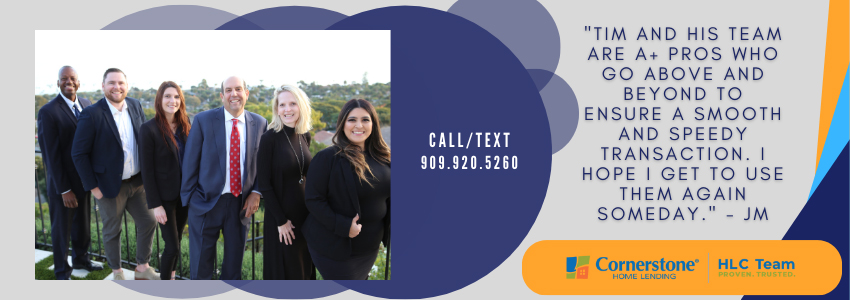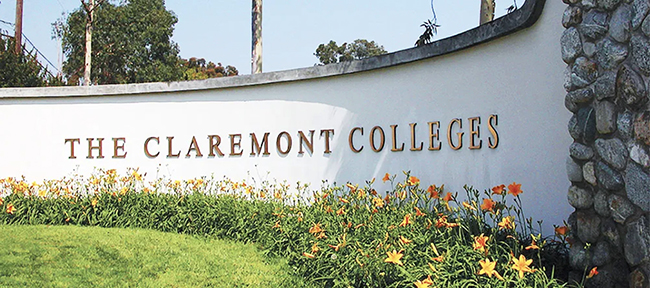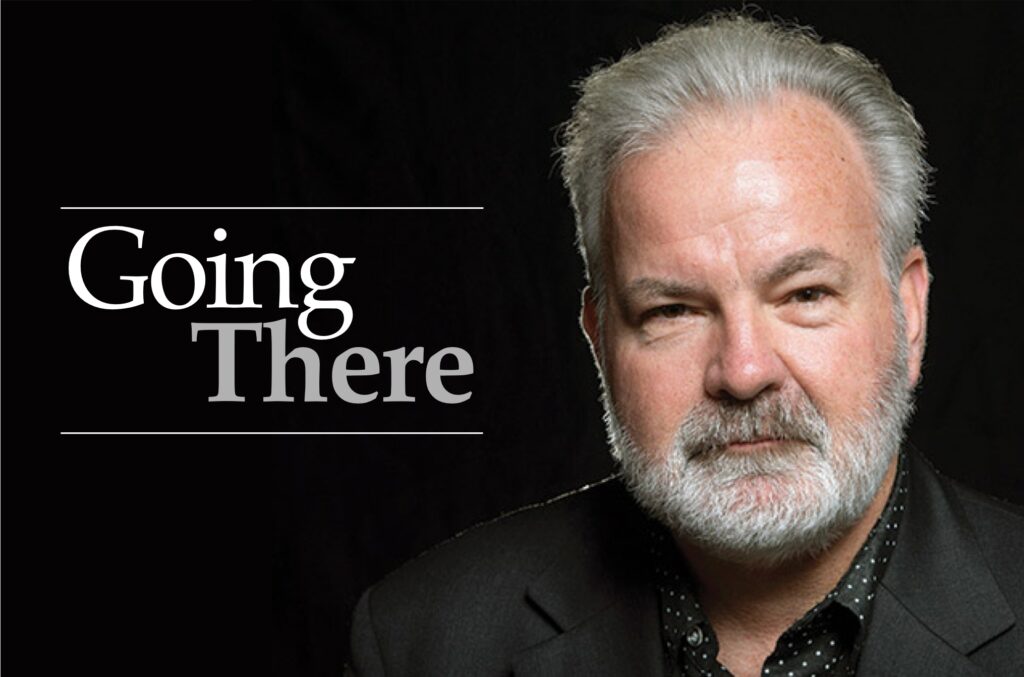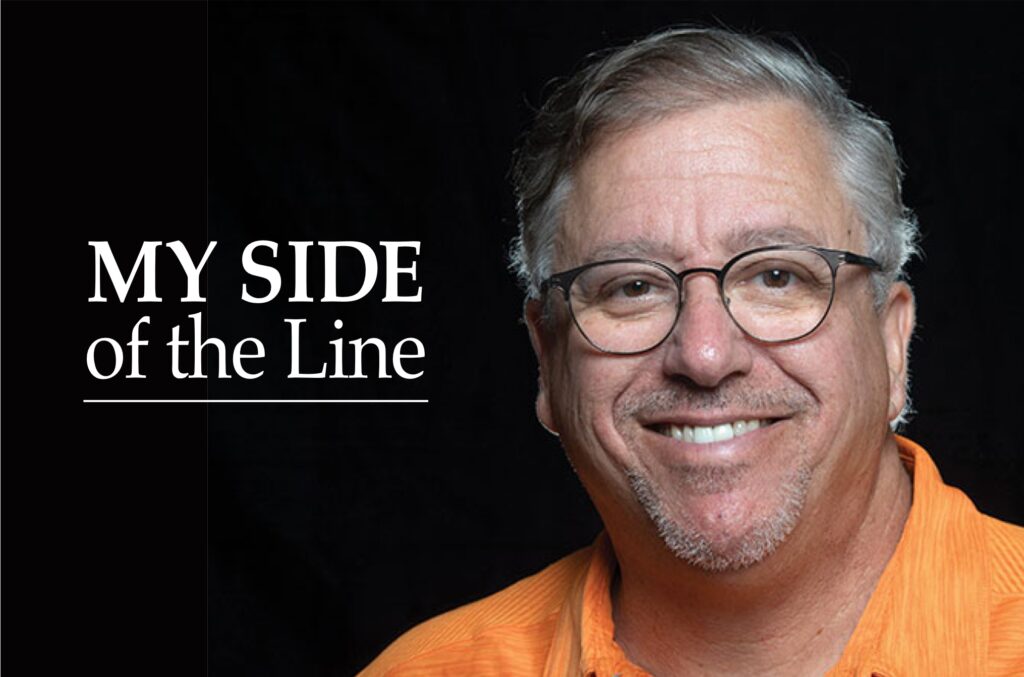Readers comments 12-15-17
Trusting LA Metro
[The following letter was addressed to LA County Supervisor Hilda Solis, LA Metro Board, Claremont City Council and Claremont City Manager, with a copy forwarded for publication. —KD]
Dear Editor:
Please sustain our trust in LA Metro by keeping the Metrolink Station at the hub of the Claremont Village.
Along with an overwhelming majority of Claremonters, I voted for Measure M—to have Claremont become a multimodal transportation hub, with stations for Metrolink, the Gold Line and local buses. I also supported having the Gold Line at grade with the other tracks. Elevating the Gold Line would result in a barrier that will divide the town and encourage more cars to drive through the Village.
People can drive around the Claremont Village on Monte Vista and Towne Avenues. Indian Hill Boulevard and College Avenue are for driving to the Village. Our city council voted to continue making the Claremont Village pedestrian-oriented and bicycle-friendly, and to oppose the bridge.
For decades, we have been planning and building transit-oriented development in the Village, so people can walk and bike to public transit.
Now LA Metro is testing our trust, by proposing to discontinue the Metrolink station and imposing a bridge that many of us don’t want.
The large turnout at the Monday Metrolink meeting made it clear that young and old will have to bear additional costs if Claremont loses the Metrolink station. Businesses in the Claremont Village, which are a destination for public transit, will lose considerable money, affecting our whole community. But LA Metro will also lose revenue, because fewer people than are projected will ride public transit to and from Claremont if there is no Metrolink station.
If this trust is broken, it may take decades before future generations will support public transit propositions again. Many people in Claremont did not come to the Monday transit meeting because they have children at home, or may be rather cynical about going to another public meeting that may just go through the motions of being transparent.
A growing segment of our population is losing trust in government, as is evident by what’s happening in Washington. LA Metro needs to maintain public trust, or risk becoming detached from its constituency.
To meet budget shortfalls, a place to begin in Claremont is to eliminate the Gold Line bridge, reducing both construction cost and time. Unless we keep the Metrolink station, both the public and LA Metro will incur costs that are likely to be much greater than any savings derived by not having the station. It will also be less likely we can reduce congestion and emissions in the LA basin.
Let’s work together to make Claremont a model multimodal transit hub integrated into our Village. There are many fine examples, throughout the world, that show that this is much more successful than putting public transit stations in parking lots.
Mark von Wodtke, FASLA
Professor Emeritus, College of
Environmental Design
Cal Poly Pomona
[Editor’s note: The following letters were all sent to the LA Metro Board of Directors with copies forwared for publication. —KD]
Metrolink questions
Dear Editor:
We were in attendance at the Claremont presentation by Metro, Metrolink and Gold Line regarding Metro Motion 21.1 Summary. We came away with these questions and concerns for answers:
1. Statewide vision for growth is walkable communities near transit. This is expressed in Statewide Housing Assessment, California Transportation Plan 2040, and Governor’s Environmental Goals and Policy Report. Claremont is the most walkable station on the line and greatly enhances the destination amenities which can be served by the line. Why would they throw that away?
2. The discussion by the presenters seem to be more focused on the efficiency of the trains and time that it takes to get from point A to B, and not too much on why it is that passengers use the trains. It appeared that the emphasis on the existence of the trains is more for the efficient operation of the vehicles themselves rather than the needs of the passengers, or why trains exist in the first place.
3. Rather than plans to cut, it would seem prudent to expand plans where rail lines can meet the needs of the future.
4. Using shuttle buses as band aids to work around construction issues presents a whole range of new issues that the presenters failed to address. Shoving those problems off to Foothill Transit in passing conversation of a serious topic needs to be fully addressed.
5. This is not the Measure M that we voted for, and which we will be paying for and not receiving should Metro Motion 21.1. go forth as presented.
Juan and Lynne Matute
Claremont
To Supervisor Hilda Solis
Dear Editor:
Over the years having the Claremont Metrolink station within walking and bike riding distance from my house has meant much to me and my family.
We’ve met friends at Union Station and walked to the Broad. I took my daughter and her friend to Lion King at the Pantages, connecting with the Red Line, when they were elementary students.
My daughter, when in high school, planned train parties with her friends to Union Station, Chinatown, La Placita or Olvera Street and Little Tokyo, which gave her the autonomy to explore the city with friends in a safe, constructive way. My daughter rode the train from Sycamore Elementary on field trips with her classes. They walked from school to the train station.
But none of it speaks for how much our family relied upon Metrolink as much as during the years that she was a student at UC Santa Barbara. Without a car, this is how she traveled to and from campus. Early in the morning, on a Monday, we would drop her off on the way to work, and she would often arrive home on a Friday afternoon.
With her father and I still at work, she would walk the mile or so home. Owning and operating a car would have been expensive—this was a good option for her during her four years of undergraduate work. It saved us a lot of money and along the way, it was a great opportunity to explore the Southland. Statistically, teen drivers outdistance other groups for causing auto accidents—train and bus travel are good alternatives.
Please do not eliminate this station. Our roads are clogged, our air quality (particularly in our inland area) polluted, commuter times in the city are long, car maintenance is expensive, parking in the city difficult and the traffic hard to negotiate. None of these conditions promise to be alleviated in the future—they are more than likely to worsen. For the good of the environment and to build community, we need to get out of our cars. Having a local Metrolink station encourages just that.
Thank you for representing us in the past. Here’s hoping that you will continue to represent our community on the edge of the county and your district on this issue. I attended the meeting on Monday to an overflow crowd that was nearly unanimous in their desire to retain our station.
At that meeting, college students were seated on the floor in front, there was standing room only in the back, with extra seating provided outside. Even though Metro assured us there were enough brochures for everyone, they ran out. They did not anticipate our community response. The people in attendance only represent a small fraction of the community who would be adversely affected by the loss of a station in our community.
Pamela Casey Nagler
Claremont
Claremont loves Metrolink
Dear Editor:
For the past several years, my husband has been waking up at 4:20 in the morning to board the Claremont Metrolink into LA. Working in the city is something he’d wanted to do for a long time, and Metrolink has made it much more attainable. He’s able to be home at a reasonable time for dinner.
It also means one less car on the 10 freeway—thus a little less traffic, a little less gas used, a little less air pollution. Sometimes he walks down to the Claremont station, meaning even less environmental impact.
I have myself had the pleasure of chaperoning several school field trips with our children as we rode the train into LA. What a great time we had as we walked from the school down to the station, riding through different neighborhoods along the way, arriving at spectacular Union Station and then crossing over to Olvera Street.
Our kids got a sense of their place on the planet and in history—and it kept a school bus off of the freeway. It wouldn’t have happened without an easily accessible train station.
Our family members have also enjoyed a number of trips by train, boarding in Claremont and then transferring to Amtrak in LA. There are so many of us in Claremont who can tell the same stories.
Another benefit of having a station in our downtown: Claremont businesses benefit from commuters. People get off the train after work and stop by a local shop before heading home. People from surrounding areas come here to shop or to meet friends for dinner. Metrolink connects Claremont to the larger area.
Eliminating the Claremont station would mean that my husband would drive to and from another station, thus impacting parking and traffic in a neighboring city, or he might just give up on the train altogether. Multiply that by the hundreds of people who use our local station, and it is a significant impact on the region.
Getting Metrolink service here in Claremont took a long time and has been a boon in so many ways. It is a big step in the right direction, so I can’t see how it makes any sense to stop serving Claremont. We love and need our Metrolink station.
Laurel Tucker
Claremont
Future museum patron
Dear Editor:
I love that we will have a new museum in Claremont. Please tell me there will be adequate parking for the handicapped, as we are a graying city!
Cassandra George
Claremont
Lack of funding for the arts
Dear Editor:
In response to the article on El Roble’s Turkey Trot funding new equipment for the PE department, I wanted to discuss funding of arts programs in Claremont schools—just another of many underfunded departments in the Claremont Unified School District.
During my years at El Roble and CHS, I was a part of both the color guard and concert band. During my time there, it was clear that both activities were in need of more funding from the school.
Countless times we had to change to more cost-effective solutions—for costuming, themes and equipment—all due to lack of funding. Attempting to buy new equipment to replace the old, or increasing what we had in order to accommodate a larger team, was a struggle. There were also times where we had to limit our participation in competitions due to insufficient funds to pay for transportation and fees to sign up.
What made the lack of funding more frustrating was that while the music department had to work hard to fundraise for the jazz band, marching/concert band, orchestra and color guard, other teams—such as the football—spent considerably more on an annual basis for “improved” coaches and uniforms. These teams often did not perform any better, regardless of their increased budgets. Meanwhile, the entire music department continues to struggle in order to fund more performance activities.
As such, I truly believe that more funding should be put into the arts in the Claremont school district. A recent study by the University of Sydney has shown that artistic students have increased school motivation, classroom engagement, self-esteem and life satisfaction, when compared to students not involved in the arts.
With increased competition in many job fields, it is becoming more advantageous to receive an interdisciplinary education. I myself am an economics-accounting and dance double major—a major to which many have expressed surprise and doubt. But I know for a fact that having an interdisciplinary major has allowed me to view various topics and classes from different perspectives, and to allow for more creativity when solving problems.
I encourage others to support local performances to show support for art programs present here in Claremont.
Chloe Vich
Claremont McKenna College
CHS IB Class of 2016
Thanksgiving thanks
Dear Editor:
T?hank you for your story regarding our 25th Claremont community Thanksgiving meal. Thank you Matt Bramlett and Steven Felschundneff for the coverage!
It was great to see the Boy Scouts Troop 214 and Los Angeles Supervisor Hilda Solis be recognized, but I also wanted to say this meal would not have been possible if it were not for all the other community partners.
In addition to St. Ambrose Episcopal Church, we want to thank the folks at Life Bible Fellowship, Claremont Presbyterian Church, Temple Beth Israel, the Muslim community of the Inland Empire, who have literally cooked hundreds of turkeys and sent volunteers for many years. This truly is an interfaith event.
Special thanks to the following organizations for financial contributions and donations: the city of Claremont, The Gap Food Bank, Kiwanis Club of Claremont, Claremont Sunrise Rotary, Pilgrim Congregational Church, Golden State Water Company and Mt. San Antonio Gardens.
Thank you to all of the volunteers over the years and to each person who donated a turkey or pie or two, or 15 in some cases. Tim Rotolo started playing the piano for the Thanksgiving lunch when he was only eight years old and he has faithfully come every year for the past 16 years. Every year people say to Tim “Wow, you have grown so much. I remember when you were younger.” He is 24 years old now. Thank you, Tim!
As a point of clarification, Kim McCurdy and Gayle Jensen are scaling back their participation because they are going to focus on feeding people over the entire year and not just on Thanksgiving. We have so much to be grateful for in our lives.
Jullie McCurdy
Claremont








0 Comments